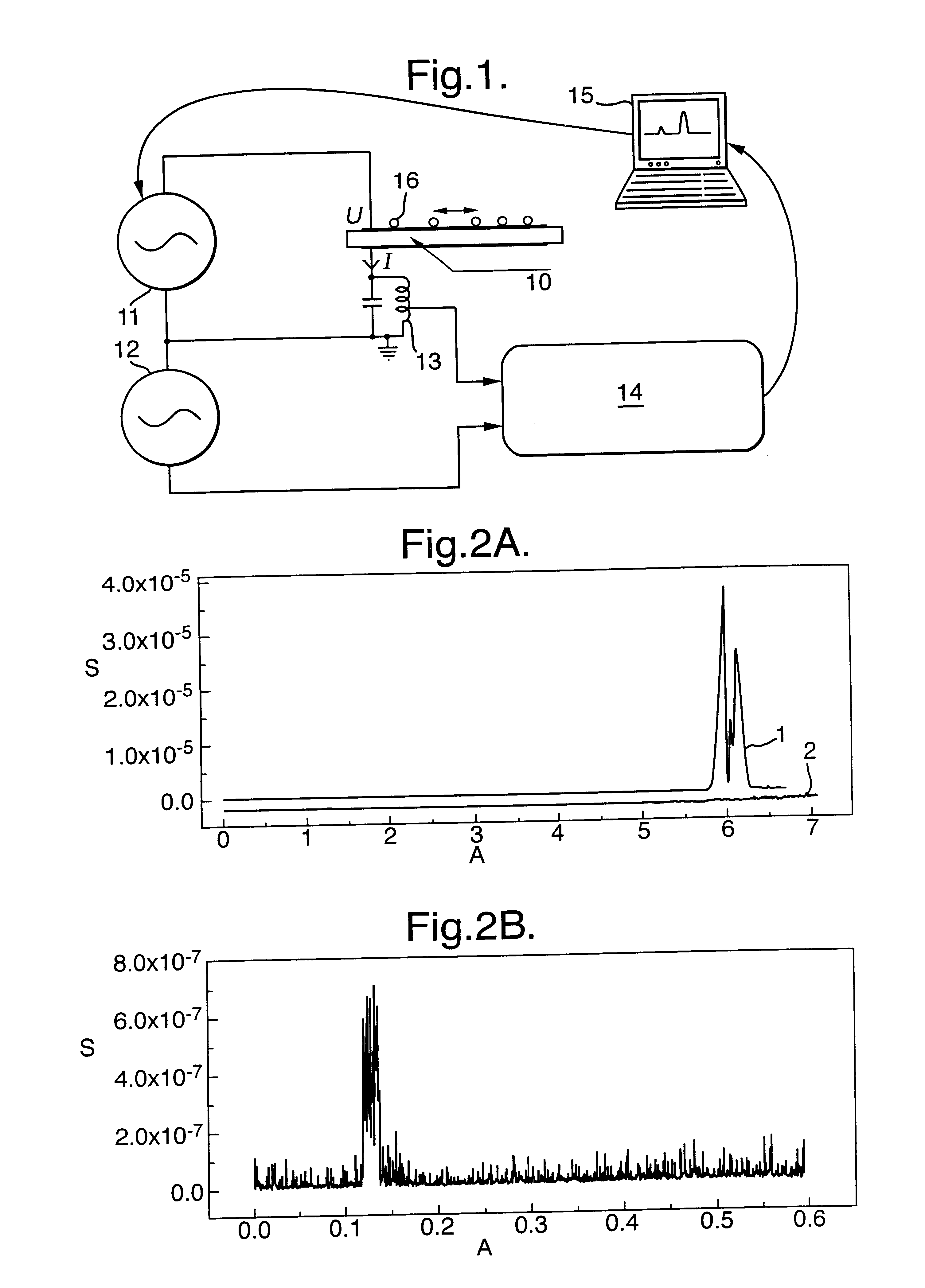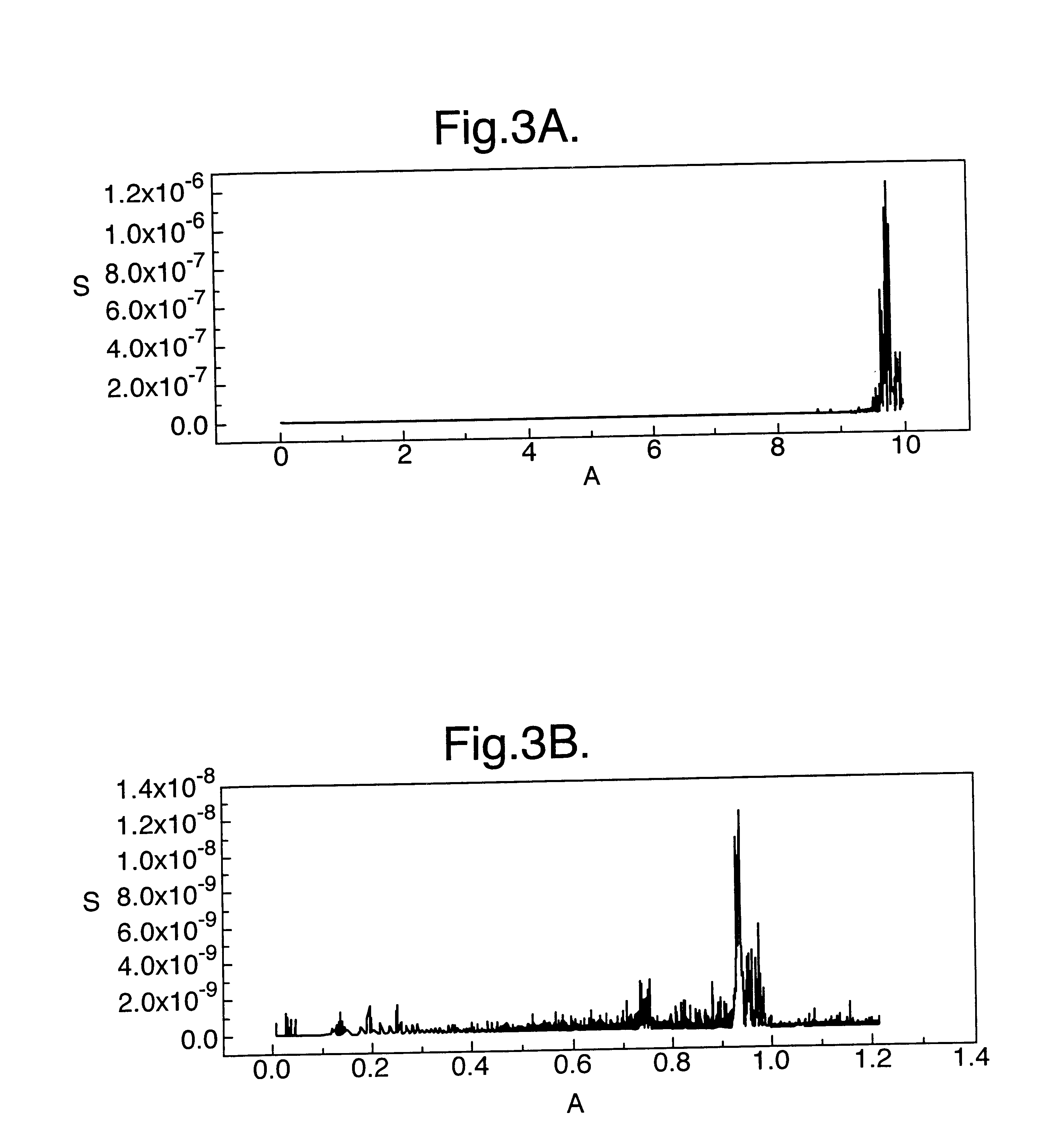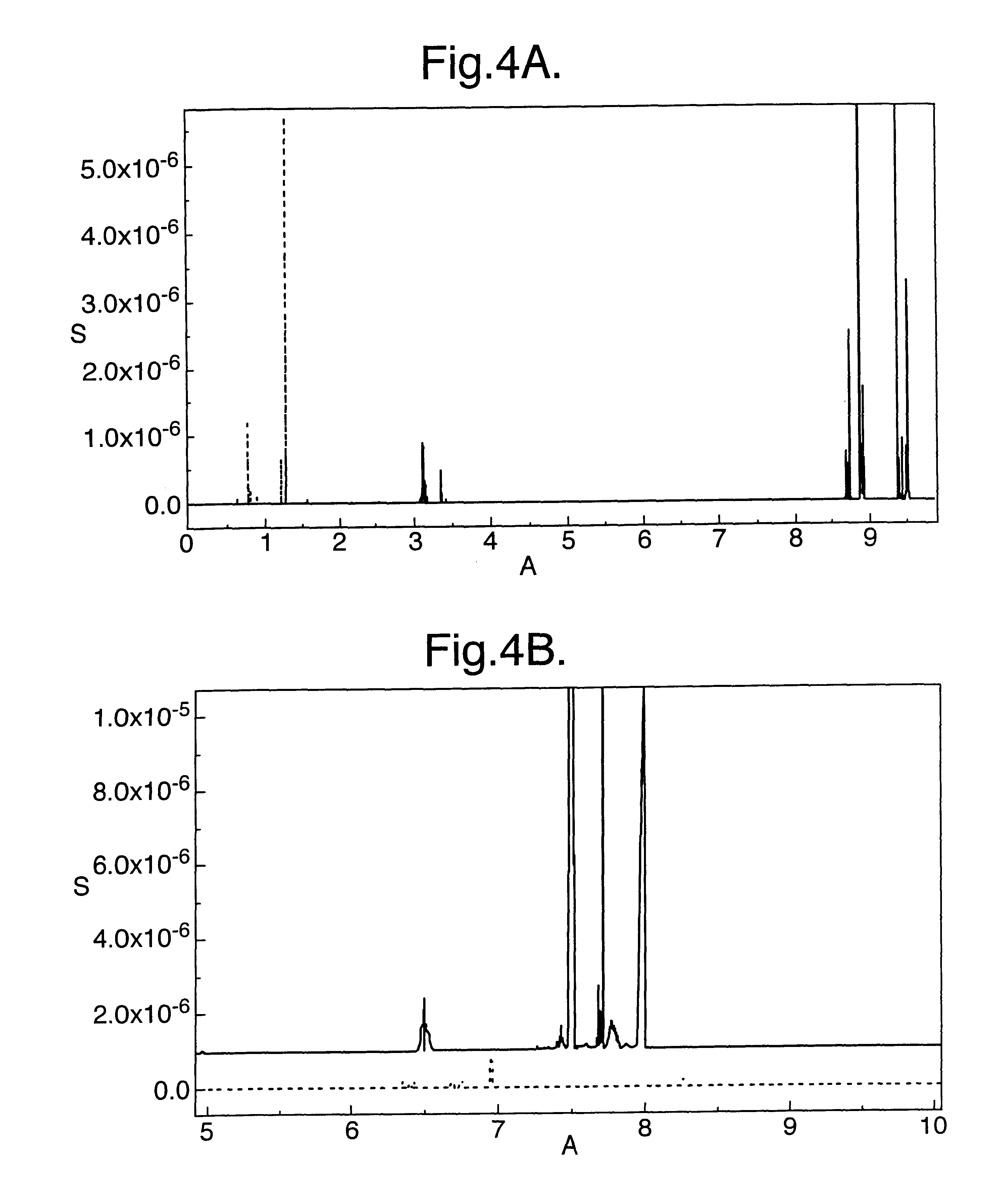Measurement and use of molecular interactions
- Summary
- Abstract
- Description
- Claims
- Application Information
AI Technical Summary
Benefits of technology
Problems solved by technology
Method used
Image
Examples
example 1
Latex spheres, 5 .mu.m in diameter, were attached to a QCM sensor surface via multiple numbers of the bond of interest. The coverage of the spheres used was 1% of the surface area of the QCM. The spheres had only 1% variation in their diameter.
The QCM sensor comprised polished quartz plates, acoustic traverse-cut at 35.degree., and 8.25 mm in diameter. Layers of chromium (20-30 nm thick) and then gold (100-120 nm thick) were deposited.
Three different bonds were studied, in experiments conducted in air a physical bond (latex-gold), a streptavidin-biotin bond and a covalent bond (amide linkage). The physical bond was made by placing the latex spheres directly on the sensor surface and drying in nitrogen. The streptavidin-biotin bond was made by applying biotinylated BSA to the surface, and drying in nitrogen. The chemical bond was made by forming a thiol monolayer using an acid-terminated thiol (12-mercaptododecanoic acid) dissolved in ethanol; this was then activated using EDC-NHS, a...
example 2
This Example shows that methods of the invention may also be carried out in solution. The Q factor of the QCM will decrease due to liquid loading, thus reducing the amplitude of oscillation at a particular voltage when compared to air. There will be viscous forces acting on the microsphere and its effective mass will increase, due to the associated layer of water, increasing the force on the sphere.
FIG. 3 shows the rupture force spectra for 5 .mu.m latex spheres attached to the surface via streptavidin-biotin (FIG. 3A) and a chemical bond (FIG. 3B). Rupture occurs respectively at 1 V and 10 V.
A reduction in the critical voltage for the streptavidin-biotin bond, by a factor of six, from 6 V to 1 V on going from air to water, and the breakage of the chemical bond in water, indicates that the latter effect is dominant. Thus, this Example clearly demonstrates that bond-breaking, and hence separating and biosensing, are possible in water liquid or another.
Assuming that the bond density f...
example 3
The Example demonstrates the detection of viruses, and in particular genetically modified bacteriophage displaying a maltose-binding protein fused to the phage pill coat protein, since both the phage and the maltose-binding interaction are well characterised and readily available. The phage is a long, thin, filamentous virus consisting of a flexible rod 1 .mu.m long and 6 nm in diameter. The genetically modified phage additionally display up to 5 maltose-binding proteins at one end of the virus as fusions to the phage pill coat protein; see McCafferty et al, Nature, 1990, 348:552. These phage can be specifically purified on amylose resin.
A maltose-binding protein fusion to the amino terminus of indole glycerol phosphate synthase was displayed on the surface of fd phage as a fusion to the amino terminus of the gene III-encoded coat protein. For this purpose, an fd phage vector, pJB113, was constructed; it encoded a genetic fusion between MalE (E. coli), trpC (E. coli) and gene III. T...
PUM
| Property | Measurement | Unit |
|---|---|---|
| Electric potential / voltage | aaaaa | aaaaa |
| Affinity | aaaaa | aaaaa |
Abstract
Description
Claims
Application Information
 Login to View More
Login to View More - R&D
- Intellectual Property
- Life Sciences
- Materials
- Tech Scout
- Unparalleled Data Quality
- Higher Quality Content
- 60% Fewer Hallucinations
Browse by: Latest US Patents, China's latest patents, Technical Efficacy Thesaurus, Application Domain, Technology Topic, Popular Technical Reports.
© 2025 PatSnap. All rights reserved.Legal|Privacy policy|Modern Slavery Act Transparency Statement|Sitemap|About US| Contact US: help@patsnap.com



